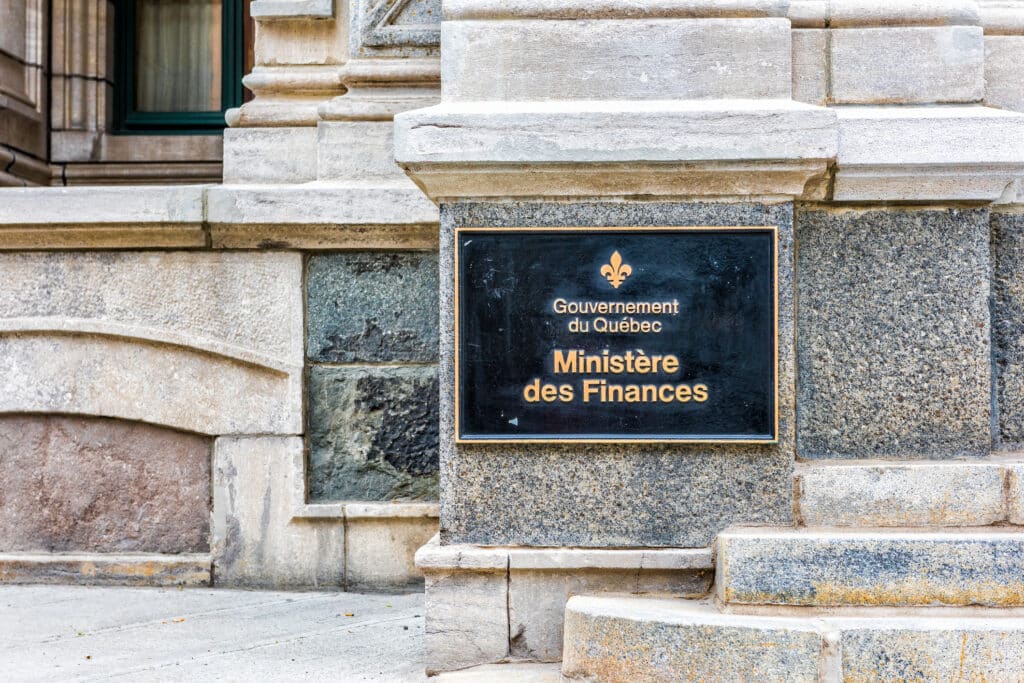Minister of Finance Eric Girard tabled his 2024 budget for Quebec last week, which called for a significant restructuring to two of the province’s banner innovation tax credit programs.
Specifically, the budget calls for rebalancing the refundable and non-refundable portions of the Electronic Business Development Tax Credit (CDAE) and the Multimedia Tax Credit (CTMM).
For CDAE, the Quebec government will scale up the non-refundable share—that is, the portion of the credits where businesses must pay tax to Quebec for qualification—from 6 percent today to 10 percent by 2028. Simultaneously, the refundable portion of the tax credit will be scaled down from 24 percent in 2024 to just 20 percent by 2028.
| Year | Refundable | Non-Refundable |
| 2024 | 24% | 6% |
| 2025 | 23% | 7% |
| 2026 | 22% | 8% |
| 2027 | 21% | 9% |
| 2028 | 20% | 10% |
The CTMM, which currently doesn’t have a non-refundable component, will also see the total taxable balance shift to a 20:10 percentage split by 2028 in an attempt to encourage more provincial income from successful businesses in this sector.
| Year | Refundable | Non-Refundable |
| 2024 | 30% | 0% |
| 2025 | 27.5% | 2.5% |
| 2026 | 25% | 5% |
| 2027 | 22.5% | 7.5% |
| 2028 | 20% | 10% |
Combined, both of these measures ultimately reduce the total ‘generosity’ of these programs, which cost the provincial government almost $850 million CAD in 2023.
This in the face of an $11 billion budget deficit for 2024—perhaps the largest in the province’s history—as Quebec punts balancing the provincial budget a full two years later than previously promised.
“Right now, we have no growth,” Girard said, citing a hike in interest rates over the last year that drove the budget deficit to be almost three times larger than forecasts predicted in 2023.
With the goal of having a fully balanced provincial budget by 2028 in place, the government is now looking toward the successes of the local media and electronics industry in Quebec to help bolster healthier conditions across the province.
Businesses will need to claim taxes in Quebec at higher rates going forward
While neither the CDAE or CTMM will be going away, many businesses that had never paid taxes in the province may have to start in order to continue qualifying for non-refundable credits long-term.
As noted by LaPresse, researchers who have studied these tax credit programs have flagged that of the 702 companies eligible for both CTMM and CDAE, only four had paid taxes in 2019.
By 2028, the government anticipates that it will recover upwards of $365 million CAD by making these adjustments to the refundable ratio to both programs.
The 2024 budget also removes the ceilings on eligible salaries for the CTMM ($100,000) and the CDAE ($83,333). As a result, businesses will in theory be able to apply tax credit claims to higher-salary individuals.
Qualifying for CDAE in the first place
CDAE tax credits are geared toward businesses developing and selling software licenses or services (ie. Software-as-a-Service or SaaS). To pass this threshold, companies must have 75 percent of gross revenue derived from IT sector activities, with 50 percent of these activities related to a core subset of the IT sector.
Additionally, a qualifying company must have at least 6 full-time technical employees for the entire fiscal year of the CDAE claim, which differs from SR&ED in that it doesn’t have revenue or employee-number requirements (per se) as part of the qualifying criteria.
It’s worth noting that there is flexibility here: Startups that have existed for less than 2 years will meet the eligibility criteria for CDAE once they have 6 eligible technical employees on the payroll for a given fiscal year.

Stacking SR&ED, CDAE and innovation capital in Quebec
Both SR&ED and CDAE are tools that founders can use to cover salaries, but the requirements (and credit amounts) vary pretty significantly given each program’s focus.
For instance, CDAE covers only the salary of employees in technical roles (ie. developers and quality engineers) during the product development life cycle. An important caveat (and distinction from SR&ED) is that this R&D needs to be contributing toward a revenue-generating product that’s already in the market.
From there, CDAE funds are delivered in the form of an up to 24 percent refundable tax credit and an up to 6 percent non-refundable tax credit of each eligible employee’s salary (for 2024, at least). These credits are also applied to the total salary of the qualified individual.
For SR&ED, on the other hand, businesses can claim tax credits on expenses such as salaries, wages, materials consumed or transformed, subcontractor expenses, and overhead—so long as they are directly related to or directly supporting eligible R&D activities in Canada. Put simply, the SR&ED refundable tax credit is based on the percentage of time an employee has spent on R&D activities relative to their salary.
CDAE is most beneficial to more mature companies that have made progress in their development but need additional funding to scale—especially as it relates to bringing software-based innovations to market.
There are options for businesses that want to optimize both CDAE and SR&ED on the provincial level to maximize the tax credit amount.
Doing this is tricky, however, and requires not just deep knowledge of existing tax code, but the ability to communicate the nature of innovation both from the business-side and technical-side of R&D.
This is especially critical for businesses that may be applying for the first time—or who have maybe struggled with their application in the past despite delivering on all relevant criteria.









